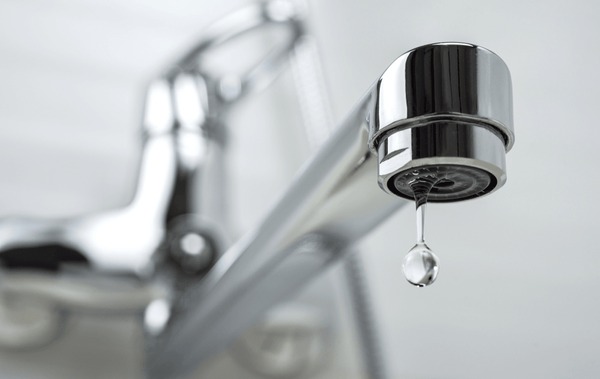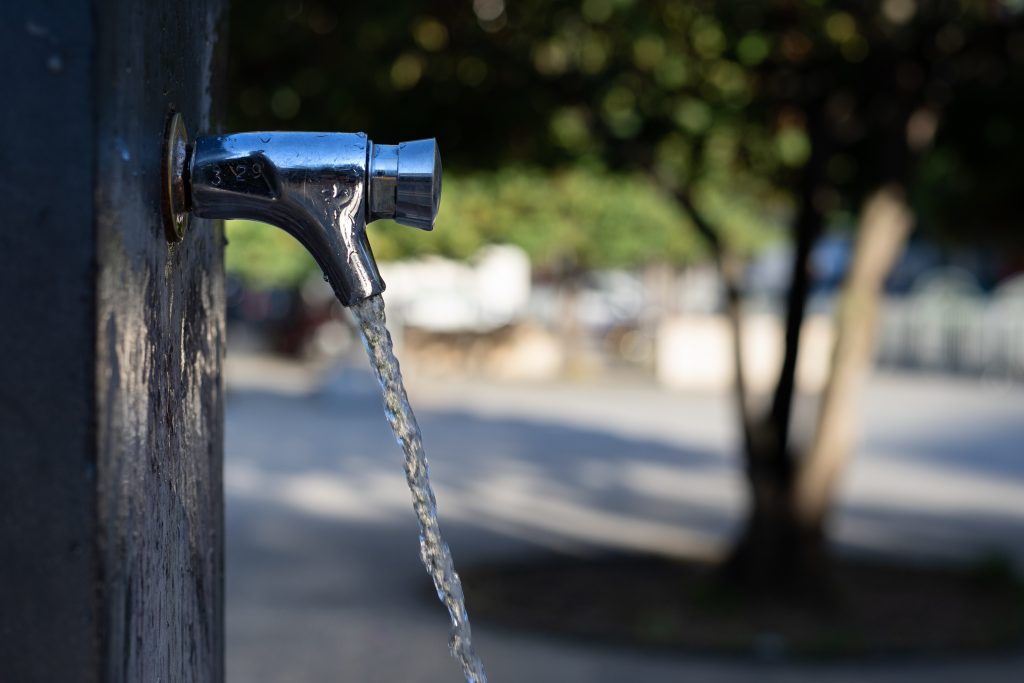Do you find yourself trying to locate help on The Environmental Impact of Leaky Faucets?

Introduction
A leaking faucet might feel like a minor annoyance, but its effects extend much beyond the periodic drip. Understanding the impacts of a dripping faucet is important for both property owners and the environment. In this post, we'll discover the various effects of this usual home problem and why resolving it quickly is essential.
Sources Of Leaky Faucets
Leaking taps can result from a range of variables, including wear and tear, high water pressure, and corrosion. In time, the continuous use of faucets can lead to worn-out seals and gaskets, triggering leaks to develop. In addition, too much water stress can put strain on plumbing components, bring about leakages. Rust and rust can also damage tap elements, making them prone to leak.
Water Wastefulness
One of one of the most considerable consequences of a dripping tap is water wastage. Even a small drip can add up to gallons of drainage gradually. This not only increases water expenses yet also contributes to water shortage and environmental deterioration. Dealing with dripping faucets quickly is crucial for preserving this valuable source and minimizing its effect on the planet.
Financial Effect
Along with wasting water, dripping faucets can also have a significant economic impact. Increased water expenses are a direct effect of water wastage, setting you back house owners thousands of dollars annually. Additionally, the price of repairing water damages triggered by leakages can be significant, especially if left unattended for a prolonged duration.
Environmental Influence
The ecological influence of dripping faucets extends beyond water waste. By preserving water, homeowners can add to more comprehensive efforts to alleviate water deficiency and shield natural communities. Lasting choices such as rain harvesting and water-efficient components can better minimize the environmental footprint of house water use.
Technical Solutions
Advancements in innovation have resulted in the development of wise taps and water-saving tools that aid lessen water wastefulness. Smart taps use sensors to discover motion and readjust water flow accordingly, minimizing waste without compromising ease. Water-saving gadgets such as aerators and low-flow showerheads are also efficient in conserving water without endangering efficiency.
International Point of views
While leaking taps may look like a local issue, they contribute to broader worldwide difficulties such as water deficiency and environment adjustment. In regions already dealing with water tension, every decrease counts, making leakage avoidance and fixing important. By embracing water-saving methods and purchasing lasting innovations, house owners can play their component in resolving these pushing international problems.
Governing Procedures
Federal government policies play an essential role in mitigating the influence of leaky faucets and promoting water conservation. From developing codes that call for water-efficient fixtures to water-saving rewards and rebates, policymakers have a variety of devices at their disposal. By implementing and applying these laws, governments can guarantee that property owners prioritize water conservation in their daily lives.
Area Effect
Dealing with leaky taps calls for cumulative initiatives at the area level. By elevating understanding about the relevance of water preservation and supplying resources for leakage discovery and repair work, regional authorities can equip property owners to take action. Efforts such as water-saving refund programs and leakage detection campaigns can incentivize behavior change and promote accountable water use.
Case Researches
Real-life instances of the effect of dripping faucets highlight the significance of proactive maintenance and prompt fixings. From water damage to increasing water expenses, the repercussions of overlooking leakages can be serious. By sharing these case studies, property owners can better recognize the importance of dealing with leaking faucets without delay.
Educational Campaigns
Educational campaigns play a critical role in increasing recognition about the effects of dripping taps and promoting water preservation techniques. Via workshops, workshops, and online sources, house owners can learn exactly how to spot and fix leaks themselves. By encouraging individuals with understanding and devices, academic campaigns can promote a culture of accountable water use within communities.
Health and wellness Problems
Leaking taps can develop conducive atmospheres for mold and mildew and mold growth, presenting wellness risks to residents. The visibility of mold and mildew can intensify breathing problems and allergic reactions, specifically in at risk people. Additionally, water damage resulting from leaks can compromise the structural integrity of structures and bring about pricey fixings.
DIY vs. Professional Repair
When confronted with a leaking faucet, homeowners often question whether to try repair work themselves or hire a specialist plumber. While DIY repairs can conserve money, they might not always resolve the underlying issue effectively. Specialist plumbing professionals have the experience and equipment to diagnose and fix leakages appropriately, making certain lasting options and comfort for homeowners.
Preventive Measures
Protecting against leaky faucets needs routine upkeep and aggressive measures. Easy jobs such as changing damaged washing machines and seals can prevent leaks from establishing. Furthermore, updating to top quality components and decreasing water pressure can help prolong the life-span of faucets and lessen the threat of leakages.
Conclusion
To conclude, the results of a leaking tap extend far past the occasional drip. From water wastage and increased water expenses to wellness concerns and environmental influence, the repercussions of neglecting leaks can be considerable. By dealing with dripping taps quickly and adopting water-saving methods, homeowners can minimize these effects and add to an extra sustainable future.
Why You Shouldn’t Ignore a Leaky Faucet in Your Home
What Causes a Leaky Faucet?
Various factors can cause a leak, from loose and worn-out parts to corrosion. Your faucet has four essential components from which most plumbing issues will stem: the O-ring, the valve seat, the washer and the gasket.
What Is an O-Ring?
The O-ring is a stem screw that fastens parts of the faucet in place, preventing water from leaking out of the spout. Depending on your faucet type, the stem might have multiple O-rings. Water will drip from the faucet’s handles and base if this part breaks or deteriorates.
What Is a Valve Seat?
The valve seat controls the flow and temperature of the water. Found at the base of the handle, it works as a seal for the faucet’s stem. The valve seat ensures the water is allowed to flow or is blocked as the handles dictate. You’ll know it’s malfunctioning when water leaks from your faucet’s sides.
What Is a Gasket?
The gasket is found between the water inlet and the valve stem. It creates a seal between the faucet and the sink, holding its joints by aerators attached to the stem’s head. Water will trickle out from the base if the gasket isn’t working.
What Is a Washer?
The washer secures the handles and prevents leakage, serving a similar purpose to the O-ring. While the O-ring is ordinarily round and made from an elastic material, such as rubber, the washer is square-shaped and composed of brass, copper and other hard metals. If it malfunctions, corrodes or has been improperly installed, water will leak out of the handles, causing that incessant faucet drip.
Why Is a Leaky Faucet Dangerous?
A leaky faucet left alone for too long can have significant consequences.
Pest Infestations
Since bugs and rodents gravitate towards the scent of water, a leaky faucet will draw pests to your sink. Both are looking for leaks accessible through crawl spaces, which a faucet provides. If you leave water dripping for too long, you run the risk of an infestation.
Rust
If one of the faucet parts has started to corrode, the resulting rust can spread to your pipes and valves with startling speed. The rust might even lead to cracks or other impairments, resulting in more severe plumbing issues.
Your sink could also sustain damage from a leaky faucet. The water in your tap possesses sparse elements of calcium and iron that can stain your sink with repeated and prolonged exposure. Once those elements in the water have been open to the air for some time, your sink will start to rust, creating marks that can be difficult to remove.
https://www.tomsmechanical.com/blog/why-you-shouldnt-ignore-a-leaky-faucet-in-your-home

Do you enjoy reading up on How to Fix a Leaky Faucet? Make a review down below. We'd be glad to listen to your thinking about this write up. We are looking forward that you come back again later on. Are you aware of somebody else who is very much interested in the niche? Take a moment to share it. Thanks for your time spent reading it.